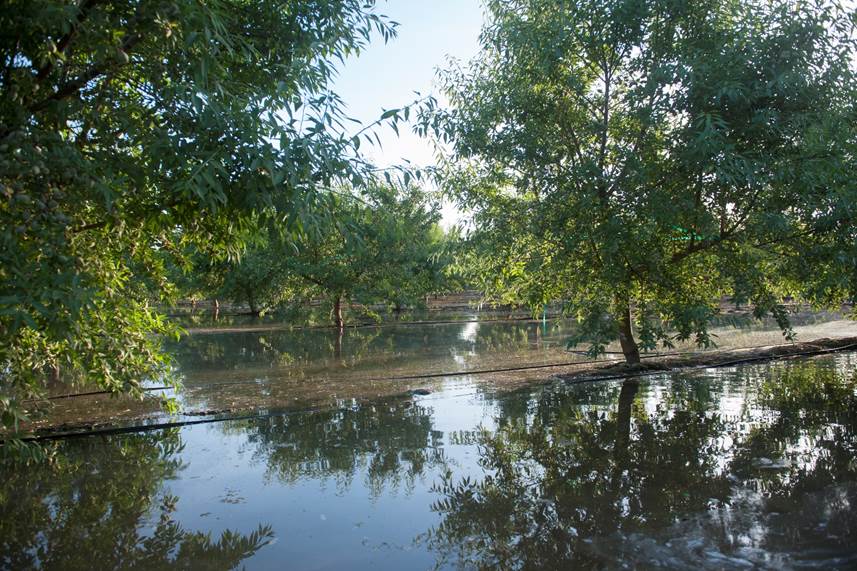
Groundwater recharge has been the focus of research for some time in the nut industry, but as water shortages continue to plague the state, it is becoming more mainstream. The Almond Board of California has made a resource available to almond growers and consultants to help them understand how groundwater recharge might be integrated into specific farming operations.
On-farm recharge involves applying excess surface water through existing water infrastructure during low winter months into orchards, basins and other areas and allowing it to percolate down into groundwater aquifers to recharge. It is designed for growers who have access to surplus surface water during off-peak periods, but who also have the right soil and other conditions to make the practice work without negatively impacting the orchard or future crops.
According to ABC’s Jesse Roseman, the guide is intended to be a roadmap for growers interested in learning more about ways to use their dormant winter orchards to recharge depleted aquifers.
“On-farm recharge is one of the most efficient ways to put water back in the ground,” Roseman said during a presentation at the Almond Industry Conference last December. “We really need the scale of almond orchards. Working land is such a critical piece of this solution.”
The guide addresses four key questions growers should answer when deciding if OFR can work for them:
Is there access to surface water for recharge; is the orchard suitable for recharge; what recharge methods are available; and what orchard management changes will be required to make it work.
There are three ways to make on-farm recharge work in orchard systems. The first and most common involves flooding dormant orchards during the winter, typically between storms. Growers must have access to winter surface water supplies and soils that allow for deep percolation, along with infrastructure such as flood irrigation valves and flow meters.
The second involves subsurface groundwater recharge using reverse tile drains. The concept essentially reverses the original purpose of tile drains to apply excess water below the root zone. Ideal conditions are sandy loam soils in the first few feet and a sandy layer below the root zone as well as tile drain systems.
A third recharge system involves recharge basins, which can be built by growers on land adjacent to an orchard or developed by external agencies such as water districts.
Growers interested in exploring recharge in their orchards can download the Introduction to Groundwater Recharge here.

Marni Katz
Marni Katz has lived and raised her family in the San Joaquin Valley for nearly 30 years. In that time, she has covered agriculture for a number of leading ag publications and organizations and gained a reputation for understanding and digesting complex information and presenting it to growers. She enjoys learning about new ways growers can farm more profitably and efficiently, and working with researchers and stakeholders to bring that information to the growing community. In her free time, Marni plays saxophone with jazz groups throughout the Valley and is an avid tennis nut.










